November 09, 2006
Making the Most of Links from Online Course Materials to External Websites
At the request of the TU120 Course Team, I spent half an hour a couple of days ago extracting by hand the external links from the online course materials for the first week of Beyond Google and popping them into delicious.
Although the materials are generated from XML source files (and so automated link extraction is trivial) I did it by hand partly to see what observations I could make about what sorts of information might be available to support the automated tagging and description of automatically extracted links.
A secondary aim was to see what thoughts occurred to me regarding the potential reuse of linkrolls/link collections, and the extent to which we could:
a) provide linkrolls as part of an added value "product" to students;
b) exploit linkrolls within a course as an additional navigation aid (for revision, or catchup);
c) use linkrolls as a feed source for a course related customised search engine.
Anyway - here are the TU120 Week 1 links, and here are a few things that came to mind as I was bookmarking them:
1) Tagging is an issue:: there are various sorts of tags we can use to mark up these external links:
I focussed just on organisational/course administration links for this exercise, using:
- section and subsection numbers (1, 1.1, 1.2 etc;) but not subsubsection numbers;
- an activity tag for when a link was referenced in the context of an activity;
- maintext when a link appeared in the main text of a section; and
- furtherReading when a link appeared as an optional/further reading link.
I also tagged all the links as courseLink to show they were provided as part of the course materials.
My choice of tags was in part determined by the sorts of info that could be trivially automatically extracted from the course XML, because this sort of process should be automated if we are to offer course related link bundles more formally.
I didn't any 'semantic' tags; (sub)sections of the course are not semantically tagged either (even the XML markup is biassed towards presentation related tags, as you may guess if you've seen the OUschema that the OpenLearn course materials are being release as on the Labspace site).
It did occur to me that it may be possible to use services like Yahoo's content analysis/tag extraction service to offer tag suggestions for our content, but I haven't tried this yet. (There's another experiment for me to try with some OpenLearn content.. It would also be good if we could get visitors to the OpenLearn and Labspace sites tagging material? ;-)
It may also be interesting to use delicious (or other social bookmarking system) tag recommendations for a particular URL to help automate tag selection for particular URLs?
Ideally, though, external link bookmarks should be semantically tagged in a similar way to the context they appear in in the course materials/the section of the course content they came from. Semantic relations between links and the context they appear in within the course materials would then be preserved in a far more robust way that using section numbers: using tags like 1.1 are brittle, particularly if the content moves. Using tags like example+cluster+searchengine are far more robust, especially if that sort of sense can be extracted from the course material automatically.
2) Delicious displays results in reverse chronological order. I put the links into delcious in the order in which they appeared in the course materials, so viewing them gives a reverse presentation order view; the same is true when you pull links out of delicious via a web feed; I don't know if this can be switched to chronological order? It's easy enough to write a script that would act as a relay and reverse the order of links, I guess, so there's yet another thig for the to do list...
3) The links can be made available in several ways
- exported as bookmarks/favourites into a browser (for example, using nested folders of bookmarks organised by section, topic, or category), or viewed as live bookmarks;
- displayed in a webtop like PageFlakes or Netvibes, or viewed in Grazr; for example, here are several ways of using an OPML bundle to provide link navigation from a Grazr widget.
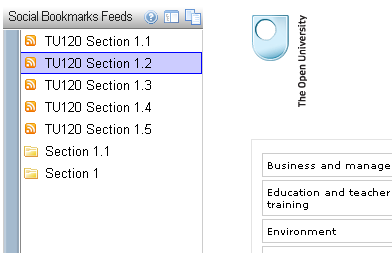
The navigation on the left actually shows different ways the links may be organised; note that when you get to the links, they are in reverse order, as discussed above.
Here are a couple more Grazr views:
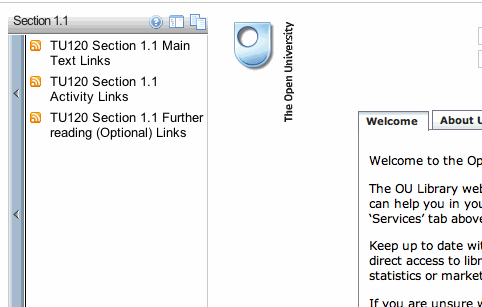
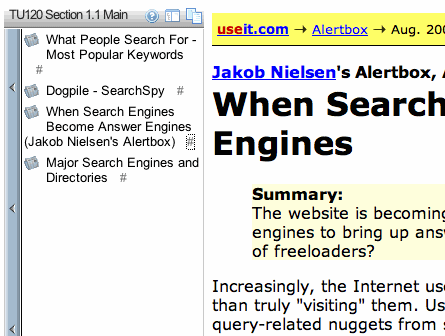
4) It's easy enough getting the links out of delicious and putting them into a Google custom search engine like this TU120 search engine (week 1 links only, at the moment):
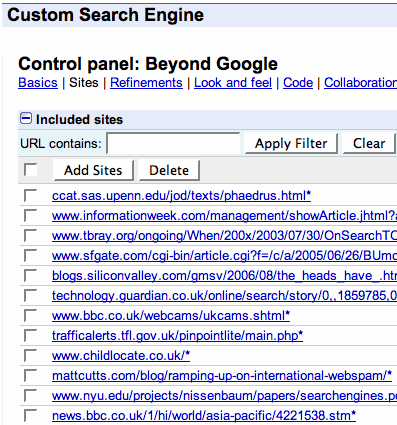
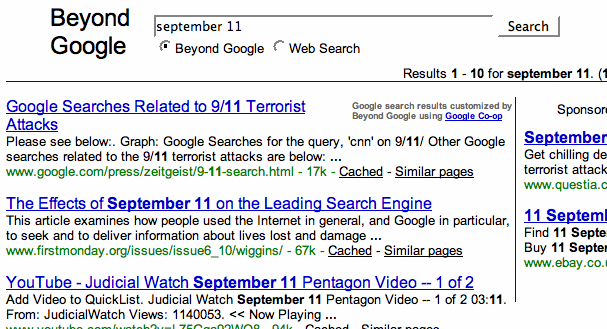
searchfeedr will also let you narrow the search down to 15 sites at a time, which would be ok for a section search; here's an example search over external links from TU120 section 1.1:
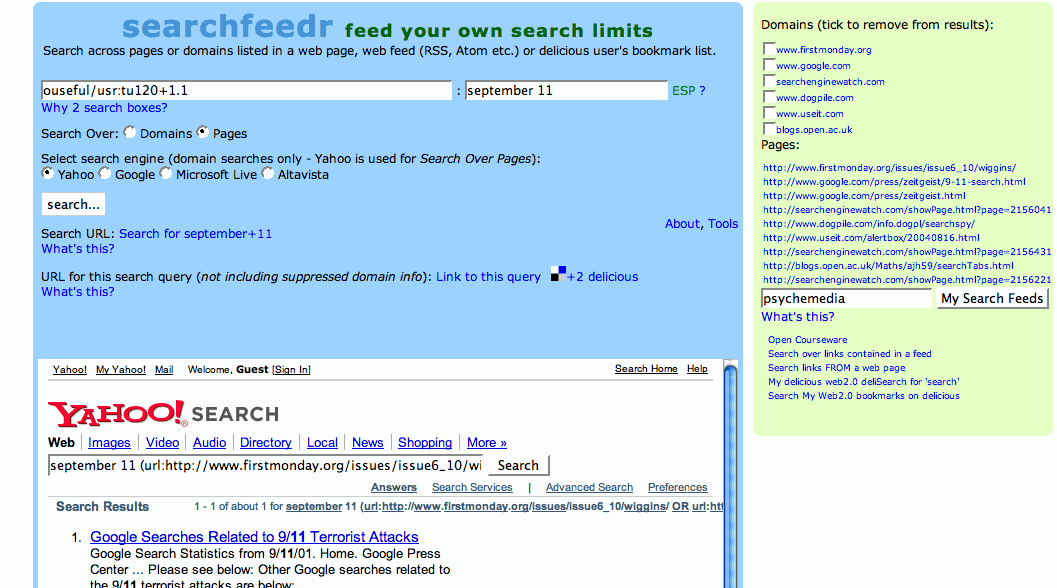
This exercise raised many more questions for me than it answered. For example,
a) how should we go about tagging link resources? One way might be to get students to add the semantic tags, and we could just provide architectural/administrative tagging? ;-)
b) user scenarios: how might students use linkrolls? How should we organise, distribute, promote, embed and/or link to external link rolls, if at all?
That databases and other resource collections have value in their own right is well known.
As we move towards more and more online courses, with course authors presumably continuing to deep link into third party sites (even if we are only supposed to link to the top level of a domain ;-) I think its worth asking how the knowledge locked up in linkrolls/link collections can be unlocked, as well as exploring ways in which further value can be added.
PS having put the links into delicious, I also realised I should have used Simpy. Simpy offers private groups, which means we can keep our IP locked up, even if we do use a third party social bookmarking service ;-)
PPS for newish readers to the blog who are interested in issues relating to the use of social bookmarking in formal education, you may be interested in reading Towards a Managed Social Bookmarking Environment in Higher Education.